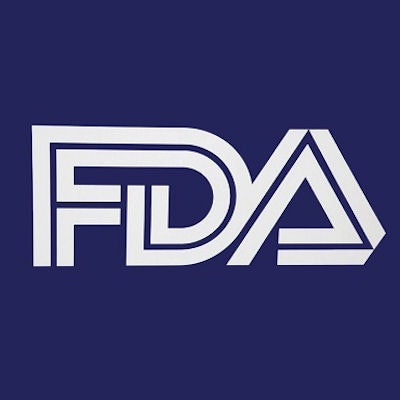
The U.S. Food and Drug Administration (FDA) has amended the descriptions of eight classification regulations -- including three that are radiology-specific -- to reflect recent regulatory changes. Among the changes, the agency is retiring the use of PACS in favor of MIMPS, or medical image management and processing system.
Enacted in December 2016, the Cures Act included provisions that amended the Federal Food, Drug, and Cosmetic (FD&C) Act to remove certain software functions from the definition of a medical device -- therefore exempting those applications from FDA regulation. The new amended identification descriptions announced on April 16 now fully reflect these exclusions.
"This provision excludes software functions that are solely intended to transfer, store, convert formats, or display, unless such functions are intended to interpret or analyze clinical laboratory test or other device data, results, and findings," the FDA wrote. "This includes functions that are intended for data retrieval, receipt, or transmission because these are forms of information 'transfer,' and functions that are intended for data maintenance, which is a form of 'storage.' "
The final rule, which will be published in the Federal Register on April 19 and take effect immediately, affects three radiology-specific devices:
- 892.2010: Medical Image Storage Device
- 892.2020: Medical Image Communication Device
- 892.2050: Picture Archiving and Communications System
As medical image storage includes software functions such as storage and retrieval that are now excluded from the definition of a medical device, the FDA has updated the medical image storage device regulation to indicate that only hardware that performs these functions remains under its purview.
§ 892.2010 Medical image storage device.
(a) Identification: A medical image storage device is a hardware device that provides electronic storage and retrieval functions for medical images. Examples include electronic hardware devices employing magnetic and optical discs, magnetic tapes, and digital memory.
Meanwhile, the FDA has amended the identification description of its medical image communications device regulation to specifically include software functions for medical image processing and manipulation. These functions have always been included in the regulation and have not been excluded under the FD&C Act, the FDA said.
§ 892.2020 Medical image communications device.
(a) Identification. A medical image communications device provides electronic transfer of medical image data between medical devices. It may include a physical communications medium, modems, and interfaces. It may provide simple image review software functionality for medical image processing and manipulation, such as grayscale window and level, zoom and pan, user delineated geometric measurements, compression, or user added image annotations. The device does not perform advanced image processing or complex quantitative functions. This does not include electronic transfer of medical image software functions.
The FDA is also significantly modifying its regulations covering PACS. Software functions for medical image storage and display have been removed, and the regulation has now been renamed as "Medical image management and processing system." The name change is meant to recognize that the current PACS regulation includes complex image processing functions that remain as medical device functions, such as image manipulation, enhancement, or quantification. The amended description also clarifies specific functions and the device's intended use with examples, according to the FDA.
§ 892.2050 Medical image management and processing system.
(a) Identification. A medical image management and processing system is a device that provides one or more capabilities relating to the review and digital processing of medical images for the purposes of interpretation by a trained practitioner of disease detection, diagnosis, or patient management. The software components may provide advanced or complex image processing functions for image manipulation, enhancement, or quantification that are intended for use in the interpretation and analysis of medical images. Advanced image manipulation functions may include image segmentation, multimodality image registration, or 3D visualization. Complex quantitative functions may include semiautomated measurements or time-series measurements.
The changes will take effect immediately without a comment period, as the amendments have been made to reflect the state of the law, and the FDA doesn't believe the changes will impose any additional regulatory burdens.




















